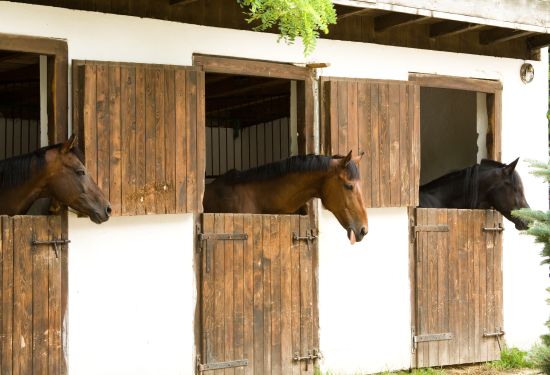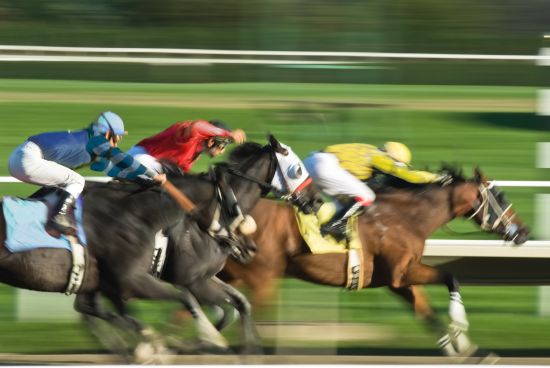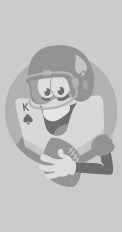

Before I became a winning poker player, I thought I could earn my first million by betting on horses.
Yep. I admit it. I traveled to Arizona in a beat-up car with four worn tires, settled in Phoenix and began spending my time at Turf Paradise Race Track where I put my limited knowledge of horse racing to the ultimate test, which, of course, was wagering my hard-earned money on an animal with four slim legs and toting a tiny jockey who sometimes seemed to enjoy tormenting me by finishing next to last when I picked him to win.
The Daily Racing Form became my second Bible. I devoured it from cover to cover trying to decipher which horses had the greatest potential to win. Naturally I made every mistake in the book when it came to picking winners. All beginning horse handicappers do.
I learned about weighs (handicappers like a horse carrying the highest weight in a six-furlong or less race, and they prefer an animal toting the lightest weight in a the longer races. I loved horses with brilliant recent workouts. And if a leading trainer and jockey teamed up in a race, I didn't even bother looking at the horse's form. I just bet it to win.
While I had some winners in the 20 to 30 percent range, I generally lost. This is true of nearly all people with limited handicapping experience, I might add. Occasionally I would hit a big payoff when I put my money on the nose of a maiden that had worked six furlongs in 34.2 seconds. Once I hit a $1,200 trifecta by taking such a horse and wheeling the 7-1 shot in a trifecta. My wheel cost $42 in the eight horse race and I went home happy.
But over a period of time, I lost considerably more than I bet. That was a bummer and I stopped going to the track until the day I met a very special woman.
Bonnie Ledbetter was an attractive blond who trained horses at Turf Paradise. She was pert with a turned-up noses and she knew her horses. The owners liked Bonnie so much they often hired her as consultant to work out problems with thoroughbreds that didn't perform well.
'She's a magician with horses,' one owner told me. 'She can talk to them. She knows when a horse is hurting and what is causing the hurt, and she knows how to fix the problem.'
One bright Saturday morning, I approached Bonnie and introduced myself. I was working as a reporter at the Phoenix Gazette, a daily newspaper. We had a horse handicapper who wrote a column on horse racing and who would make daily selections on the animals he thought would win.
Bonnie was leaning against the rail with a tall slender man in a brown suit and spiffy hat. He turned out to be Tom Ainslie, one of the best handicappers in America.
Bonnie received me cordially and introduced me to Ainsley who was carrying a Daily Racing Form. He gave me a smile and said, 'Why don't you ask her about her book?'
'OUR book, Tom,' she said, wagging her finger. 'Don't forget. You promised to co-author it with me.'
Ainslie shrugged. 'OUR book,' he said. 'Never argue with a woman. Especially if she's a blond.'
As I jotted down notes, Bonnie said she and Ainslie were writing a book they planned to call 'The Body Language of Horses.' She explained that horses communicate with each other and with rare humans who can understand them when they are feeling emotions or physical pain.
'You mean horse talk to you?,' I explained, dumbfounded.
Bonnie wrinkled her nose and grinned. 'Sort of,' she said. 'Race horses are the same as athletes. If an athlete has a sore leg or a pulled muscle, the athlete shows it. A horse does the same thing. I didn't write the book necessarily to help people win at the race track. I wrote it really to help owners and trainers better understand their horses and treat them better.
'If a horse is happy, the animal shows it. Same if a horse is angry, frightened, bored, feeling skittish, playful or ready to run the race of its life.'
Ainslie waved his Daily Racing Form at me. 'I met this lovely lady one morning when I was here at the track handicapping a race,' he said. 'We struck up a conversation and she told me who she was and said she was writing a b ook on the body language of horses.
'Now I had published a lot of books on racing up to that point. My books had sold millions. And here this upstart young woman was intimating that she knew a little more about race horses than I did. That was galling.'
'But true,' said Bonnie playfully.

He gave her a serious look. 'Very true. She proved it in the next race. I had already made my selection, a 9-2 shot that I thought would win by two lengths. But Bonnie selected another horse that was 20-1. I studied my Racing Form and shook my head. 'Bonnie,' I said, 'that horse isn't a runner. It's a feeder. It has done absolutely nothing in its lifetime of three races.
'She looked at me with a grin and said, 'It will today.' Well, I made my usual bet of a couple of hundred on the horse to win and place. Bonnie bet $2 -- she has always been a $2 bettor -- on her 20-1 shot. The animal shot out of the starting gate like a Chinese rocket and won the race by 10 lengths.'
'Eight lengths,' Bonnie said, correcting him. 'Never lie to the press.'
That convinced Ainslie that Bonnie knew what she was talking about., He had never shared a by-line on any of his past published books with anyone, but he was happy to have Bonnie's name on the cover of 'The Body Language of Horses.' The thousands of copies it sold was helped by the article I wrote when I reviewed the book in a profile I wrote for People Magazine about the two authors.
That day I picked three winners using Bonnie's system of looking for horses that were not washed out with lather on their chests. I looked for horses that had skin that literally sparkled, with tails straight out, prancing, necks arched and looking like a Kentucky Derby winner. When the last race was won, I was over $600 ahead. Over the years, I have picked many more winners when I was smart enough to look at a horse's body language.
'The Body Language of Horses,' is still available on-line. Pick up a copy and read it. Then read it again. Then send me a comment on how the system works. You may be amazed at the results.
Author: Geno Lawrenzi Jr.
(Geno Lawrenzi Jr. is an international journalist, magazine author and ghostwriter. If you have a unique gambling story to share with him, you may qualify for a cash award. Send your story with all the details to glawrenzi@gmail.com ).
Your feedback
Please enter your comment.
Your comment is added.




